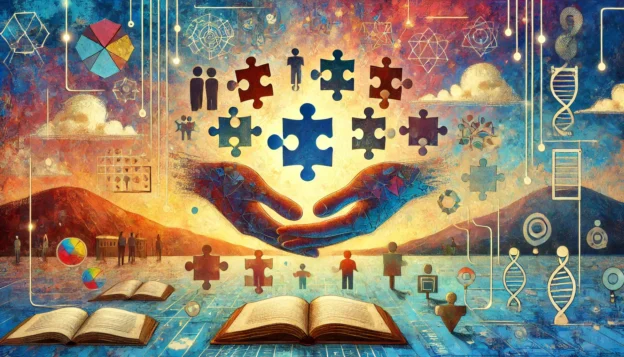This article explores key concepts in autism advocacy and acceptance, including neurodiversity, autism acceptance versus awareness, intersectionality, gender differences, late diagnosis, autistic pride, self-advocacy, and parent-led versus autistic-led advocacy. It provides historical context and describes each term, highlighting how they align or differ. Neurodiversity and autistic pride emphasize acceptance and empowerment, while intersectionality and gender differences call for nuanced approaches. Late diagnosis underscores the need for awareness and timely support. The article concludes by stressing the importance of embracing these diverse perspectives to foster a supportive environment for autistic individuals.
Introduction
This article examines key concepts in the advocacy and acceptance of autism, including neurodiversity, autism acceptance versus awareness, intersectionality, gender differences, late diagnosis, autistic pride, self-advocacy, and the differences between parent-led and autistic-led advocacy. It provides historical context, describes each term, highlights agreements and oppositions among these concepts, and concludes with a subjective opinion on their implications.
Neurodiversity
Neurodiversity is a concept that views neurological differences, such as autism, ADHD, and dyslexia, as natural variations of the human genome rather than disorders to be cured. Coined in the late 1990s, neurodiversity advocates for the acceptance and accommodation of these differences within society. It challenges traditional medical models that pathologize these conditions and emphasizes the strengths and unique perspectives of neurodivergent individuals (Kapp, 2021).
Autism Acceptance versus Awareness
The Autism Acceptance movement goes beyond raising awareness about autism to foster genuine inclusion and support for autistic individuals. While awareness focuses on recognizing autism, acceptance emphasizes understanding, respecting, and integrating autistic individuals into all aspects of society. Proponents argue that acceptance is crucial for improving the quality of life for autistic people, as mere awareness does not necessarily lead to meaningful change (Psychology Today, 2023).
Intersectionality in Autism
Intersectionality examines how various social identities (e.g., race, gender, sexuality) intersect to create unique experiences of discrimination and privilege. In the context of autism, intersectionality highlights how autistic individuals with multiple marginalized identities face compounded challenges. This perspective is crucial for creating inclusive policies and practices that address the diverse needs of the autistic community (SpringerLink, 2021).
Gender Differences in Autism
Research has traditionally focused on males, leading to a gender bias in autism diagnosis and understanding. Gender Differences in Autism show that females often present with subtler symptoms and may engage in more effective masking, leading to underdiagnosis or misdiagnosis. Recognizing these differences is essential for providing accurate diagnoses and appropriate support for autistic females (Autism Research Institute, 2023).
Late Diagnosis in Autism
Late Diagnosis refers to individuals receiving an autism diagnosis in adulthood. This can result from various factors, including gender differences, intersectionality, and lack of awareness. Late-diagnosed individuals often reflect on their experiences with a mix of relief and frustration, as understanding their identity helps explain past challenges, but they also recognize the missed opportunities for earlier support (Psychology Today, 2023).
Autistic Pride
Autistic Pride celebrates the identity and strengths of autistic individuals, promoting self-acceptance and challenging societal stigmas. It aligns with the neurodiversity movement, emphasizing that autism is an integral part of an individual’s identity and should be embraced rather than hidden or cured (Autistic Self Advocacy Network, 2023).
Self-advocacy in Autism Community
Self-advocacy empowers autistic individuals to speak for themselves and advocate for their rights. This movement has gained momentum with the rise of autistic-led organizations that prioritize the voices and experiences of autistic people over those of non-autistic allies and professionals (SpringerLink, 2021).
Parent-led versus Autistic-led Advocacy
Parent-led Advocacy often focuses on securing services and support for autistic children, sometimes emphasizing interventions to reduce autistic behaviours. In contrast, Autistic-led Advocacy emphasizes acceptance, accommodation, and respect for autistic identities. These differing approaches can sometimes lead to tensions, but both aim to improve the lives of autistic individuals (Autistic Self Advocacy Network, 2023).
Conclusion
Understanding these concepts is crucial for fostering a more inclusive and supportive environment for autistic individuals. While neurodiversity and autistic pride emphasize acceptance and empowerment, intersectionality and gender differences highlight the need for nuanced and inclusive approaches. Late diagnosis underscores the importance of awareness and timely support, while the distinction between parent-led and autistic-led advocacy reflects evolving perspectives within the autism community. Embracing these diverse viewpoints can lead to a more holistic understanding and better support for autistic individuals.
References
- Kapp, S. (2021). Neurodiversity and Autism Intervention: Reconciling Perspectives Through a Naturalistic Developmental Behavioral Intervention Framework. Journal of Autism and Developmental Disorders.
- Why Autism Acceptance Is as Important as Autism Awareness. (2023). Psychology Today.
- Autistic Community and the Neurodiversity Movement: Stories from the Frontline. (2021). SpringerLink.
- Increasing Neurodiversity in Disability and Social Justice Advocacy Groups. (2023). Autistic Self Advocacy Network.
